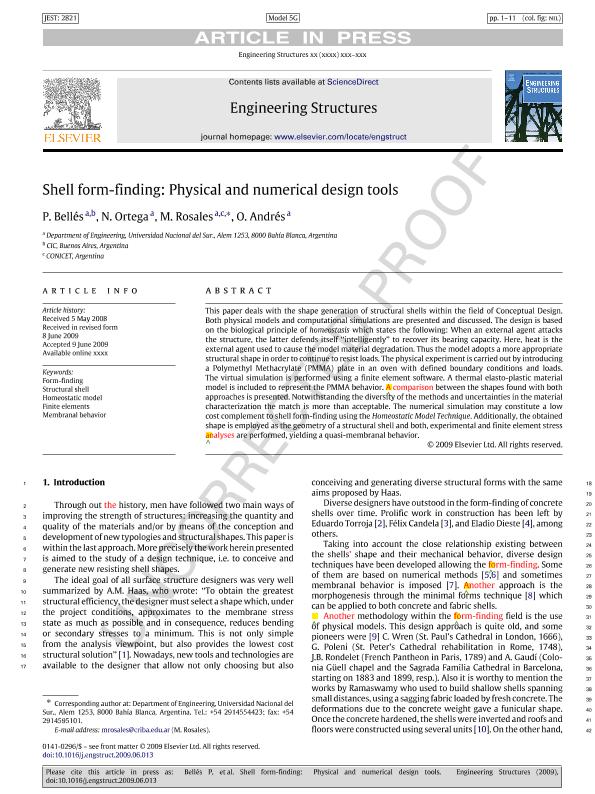Artículo
Shell form-finding: Physical and numerical design tools
Fecha de publicación:
11/2009
Editorial:
Elsevier
Revista:
Engineering Structures
ISSN:
0141-0296
Idioma:
Inglés
Tipo de recurso:
Artículo publicado
Clasificación temática:
Resumen
This paper deals with the shape generation of structural shells within the field of Conceptual Design. Both physical models and computational simulations are presented and discussed. The design is based on the biological principle of homeostasis which states the following: When an external agent attacks the structure, the latter defends itself "intelligently" to recover its bearing capacity. Here, heat is the external agent used to cause the model material degradation. Thus the model adopts a more appropriate structural shape in order to continue to resist loads. The physical experiment is carried out by introducing a Polymethyl Methacrylate (PMMA) plate in an oven with defined boundary conditions and loads. The virtual simulation is performed using a finite element software. A thermal elasto-plastic material model is included to represent the PMMA behavior. A comparison between the shapes found with both approaches is presented. Notwithstanding the diversity of the methods and uncertainties in the material characterization the match is more than acceptable. The numerical simulation may constitute a low cost complement to shell form-finding using the Homeostatic Model Technique. Additionally, the obtained shape is employed as the geometry of a structural shell and both, experimental and finite element stress analyses are performed, yielding a quasi-membranal behavior. © 2009 Elsevier Ltd. All rights reserved.
Archivos asociados
Licencia
Identificadores
Colecciones
Articulos(CCT - BAHIA BLANCA)
Articulos de CTRO.CIENTIFICO TECNOL.CONICET - BAHIA BLANCA
Articulos de CTRO.CIENTIFICO TECNOL.CONICET - BAHIA BLANCA
Citación
Belles, Patricia Miriam; Ortega, Nestor Francisco; Rosales, Marta Beatriz; Andrés, O.; Shell form-finding: Physical and numerical design tools; Elsevier; Engineering Structures; 31; 11; 11-2009; 2656-2666
Compartir
Altmétricas




